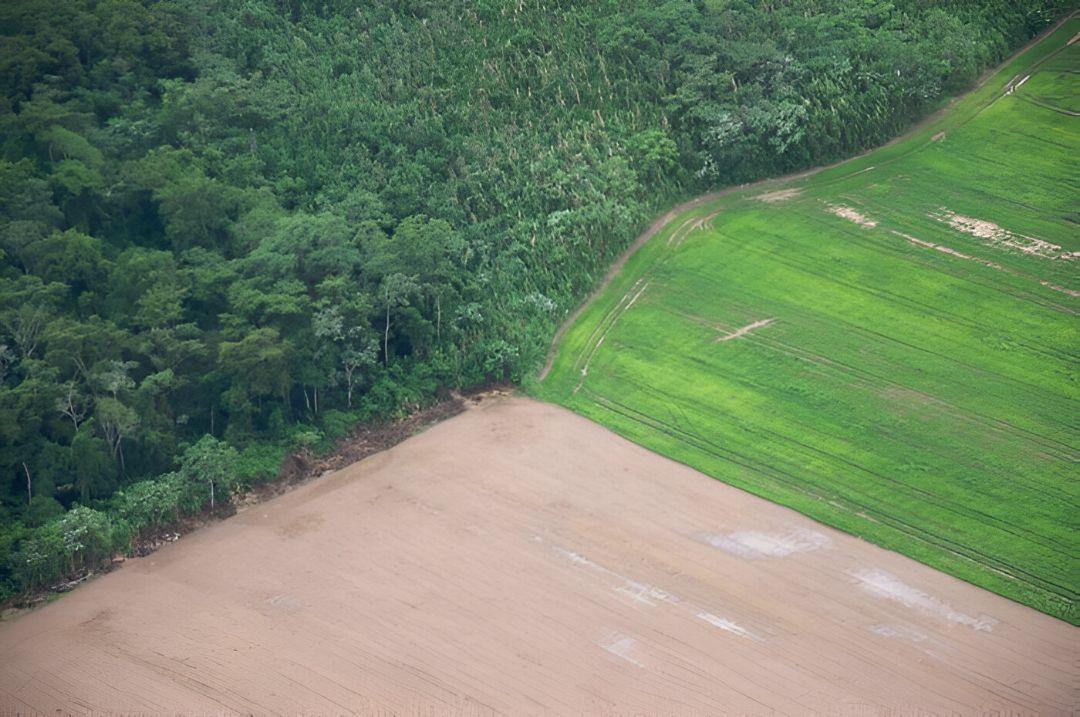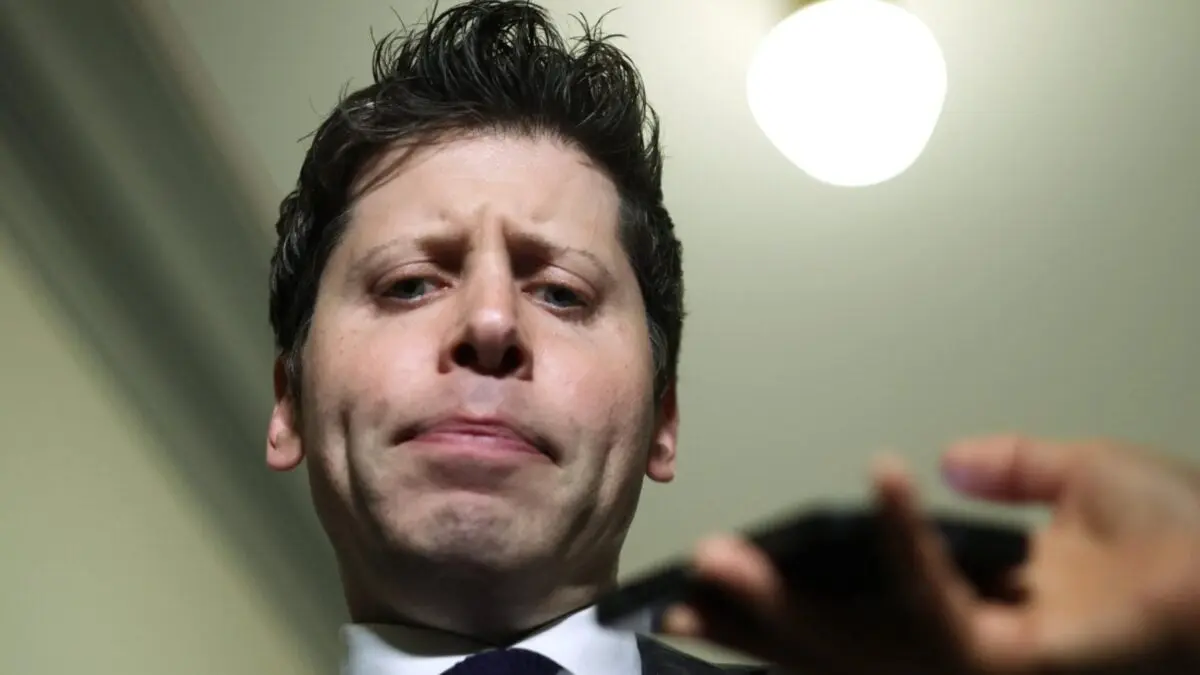Evolutionary AI Unveils Optimal Land Use Strategies for Climate Change Mitigation
3 Sources
3 Sources
[1]
With evolutionary AI, scientists find hidden keys for better land use
Using global land use and carbon storage data from the past 175 years, researchers at The University of Texas at Austin and Cognizant AI Labs have trained an artificial intelligence system to develop optimal environmental policy solutions that can advance global sustainability initiatives of the United Nations. The AI tool effectively balances various complex trade-offs to recommend ways of maximizing carbon storage, minimizing economic disruptions and helping improve the environment and people's everyday lives, according to a paper published today in the journal Environmental Data Science. The project is among the first applications of the UN-backed Project Resilience, a team of scientists and experts working to tackle global decision-augmentation problems -- including ambitious sustainable development goals this decade -- through part of a broader effort called AI for Good. University of Texas at Austin computer scientist Risto Miikkulainen, who helped launch Project Resilience, believes the new AI approach, initially focused on land use, can address an even larger set of challenges, from infectious diseases to food insecurity, with artificial intelligence potentially discovering better solutions than humans. "There's always an outcome you want to optimize for, but there's always a cost," he said. Amid all of the trade-offs, AI can home in on unexpected pathways to desirable outcomes at various costs, helping leaders selectively pick battles and yield better results. The secret sauce of the researchers' system is evolutionary AI. Inspired by the process of natural selection in biological systems, this computational approach starts with a few dozen policy scenarios and predicts how each scenario will impact various economic and environmental costs. Then, like a digital version of survival of the fittest, policy combinations that don't balance the trade-offs well are killed off, while the best ones are allowed to reproduce, giving rise to hybrid offspring. Random mutations also are sprinkled in to help the system explore novel combinations faster. The process then repeats, winnowing poor performers and keeping the best, across hundreds or thousands of scenarios. Like biological evolution, the "generations" of scenarios become ever-more optimized for a set of priorities. The team used two tools -- a recently released set of global land use data going back centuries and a model that correlates land use with carbon fluxes. First, they used this data to train a prediction model to correlate location, land use and carbon over time. Second, they developed a prescription model to help decision makers find optimal land-use strategies to reduce climate change. The AI system's recommendations sometimes surprised the team. Although forests are known to be good at storing carbon, the AI prescription model offered a more nuanced approach than converting as much land as possible into forests, regardless of location. For example, it found that replacing crop land with forest is much more effective than replacing range land (which includes deserts and grasslands). Also, generally, the same land use change at one latitude didn't yield the same benefits as at another latitude. Ultimately, the system recommended that larger changes should be allocated to locations where it mattered more; in essence, it's more effective to pick your battles. "You can obviously destroy everything and plant forests, and that would help mitigate climate change," said Daniel Young, a researcher at Cognizant AI Labs and a Ph.D. student at UT Austin. "But we would have destroyed rare habitats and our food supply and cities. So we need to find a balance and be smart about where we make changes." The researchers have turned their model into an interactive tool that decision makers like legislators can use to explore how incentives, such as tax credits for landowners, would be likely to alter land use and reduce carbon. Land use activities, including agriculture and forestry are estimated to be responsible for nearly a quarter of all human-caused greenhouse gas emissions. Experts believe smart land use changes will be needed to reduce the amount of carbon in the air and thereby slow climate change. According to Miikkulainen and Young, AI offers options that people, businesses and governments otherwise resistant to change may find easier to accept. An earlier version of the paper was presented at a major machine learning and computational neuroscience conference, NeurIPS, where it won the "Best Pathway to Impact" award at the Climate Change workshop. The other authors on the paper are Olivier Francon, Elliot Meyerson, Clemens Schwingshackl, Jakob Bieker, Hugo Cunha and Babak Hodjat.
[2]
AI optimizes land use policy, finding hidden keys for better land use
Using global land use and carbon storage data from the past 175 years, researchers at The University of Texas at Austin and Cognizant AI Labs have trained an artificial intelligence system to develop optimal environmental policy solutions that can advance global sustainability initiatives of the United Nations. The AI tool effectively balances various complex trade-offs to recommend ways of maximizing carbon storage, minimizing economic disruptions and helping improve the environment and people's everyday lives, according to a paper published today in the journal Environmental Data Science. The project is among the first applications of the UN-backed Project Resilience, a team of scientists and experts working to tackle global decision-augmentation problems -- including ambitious sustainable development goals this decade -- through part of a broader effort called AI for Good. University of Texas at Austin computer scientist Risto Miikkulainen, who helped launch Project Resilience, believes the new AI approach, initially focused on land use, can address an even larger set of challenges, from infectious diseases to food insecurity, with artificial intelligence potentially discovering better solutions than humans. "There's always an outcome you want to optimize for, but there's always a cost," he said. Amid all of the trade-offs, AI can home in on unexpected pathways to desirable outcomes at various costs, helping leaders selectively pick battles and yield better results. The secret sauce of the researchers' system is evolutionary AI. Inspired by the process of natural selection in biological systems, this computational approach starts with a few dozen policy scenarios and predicts how each scenario will impact various economic and environmental costs. Then, like a digital version of survival of the fittest, policy combinations that don't balance the trade-offs well are killed off, while the best ones are allowed to reproduce, giving rise to hybrid offspring. Random mutations are also sprinkled in to help the system explore novel combinations faster. The process then repeats, winnowing poor performers and keeping the best, across hundreds or thousands of scenarios. Like biological evolution, the "generations" of scenarios become ever-more optimized for a set of priorities. The team used two tools -- a recently released set of global land use data going back centuries and a model that correlates land use with carbon fluxes. First, they used this data to train a prediction model to correlate location, land use and carbon over time. Second, they developed a prescription model to help decision makers find optimal land-use strategies to reduce climate change. The AI system's recommendations sometimes surprised the team. Although forests are known to be good at storing carbon, the AI prescription model offered a more nuanced approach than converting as much land as possible into forests, regardless of location. For example, it found that replacing crop land with forest is much more effective than replacing range land (which includes deserts and grasslands). Also, generally, the same land use change at one latitude didn't yield the same benefits as at another latitude. Ultimately, the system recommended that larger changes should be allocated to locations where it matters more; in essence, it's more effective to pick your battles. "You can obviously destroy everything and plant forests, and that would help mitigate climate change," said Daniel Young, a researcher at Cognizant AI Labs and a Ph.D. student at UT Austin. "But we would have destroyed rare habitats and our food supply and cities. So we need to find a balance and be smart about where we make changes." The researchers have turned their model into an interactive tool that decision makers like legislators can use to explore how incentives, such as tax credits for landowners, would be likely to alter land use and reduce carbon. Land use activities, including agriculture and forestry are estimated to be responsible for nearly a quarter of all human-caused greenhouse gas emissions. Experts believe smart land use changes will be needed to reduce the amount of carbon in the air and thereby slow climate change. According to Miikkulainen and Young, AI offers options that people, businesses and governments otherwise resistant to change may find easier to accept. An earlier version of the paper was presented at a major machine learning and computational neuroscience conference, NeurIPS, where it won the "Best Pathway to Impact" award at the Climate Change workshop. The other authors on the paper are Olivier Francon, Elliot Meyerson, Clemens Schwingshackl, Jakob Bieker, Hugo Cunha and Babak Hodjat.
[3]
Evolutionary AI can balance climate goals and economic progress - Earth.com
Artificial intelligence (AI) has begun to tackle one of the thorniest questions in climate policy: how to lock more carbon into the land without wrecking livelihoods or ecosystems. Researchers at The University of Texas at Austin and Cognizant AI Labs have trained an evolutionary AI system on 175 years of global land-use and carbon-stock data. The program proposes detailed, location-specific strategies that could maximize carbon storage while minimizing economic disruption. The results feed directly into the United Nations-backed Global Resilience Project, part of the broader AI for Good initiative. The engine behind the work is evolutionary AI, a computational analogue of biological evolution. The algorithm begins with a population of policy scenarios that set different incentives for agriculture, forestry, grazing, and urban expansion. It predicts how each scenario will affect carbon fluxes, food production, and habitat value. Scenarios that strike a poor balance among those trade-offs are eliminated. The better ones "reproduce," exchanging features and introducing random mutations. Over hundreds of generations the surviving policies become progressively better at meeting the chosen goals. "There's always an outcome you want to optimize for, but there's always a cost," said Risto Miikkulainen, a computer scientist at UT Austin who helped launch the Global Resilience Project. Despite the many competing trade-offs, AI can identify surprising routes to achieve desirable outcomes at different cost levels, enabling leaders to strategically choose their priorities and achieve more effective results. The team drew on a newly released global land-use archive that traces cropland, pasture, forest and urban footprints back to the mid-nineteenth century. They paired it with a model that links each land-cover type and latitude to carbon sources and sinks. After training a prediction module on those data, they attached the evolutionary prescription module that searches for improved futures. Daniel Young, a Cognizant AI Labs researcher and doctoral student at UT Austin, noted that the AI often departed from human intuition. Although reforestation emerged as a key tactic, the system rarely recommended blanket tree-planting. It discovered that converting cropland to forest produced far larger carbon gains than converting rangeland, while carrying higher food-security costs that could sometimes be offset by yield improvements elsewhere. Latitude mattered too. A hectare of new forest in a wet tropical belt stored much more carbon than the same hectare at high latitude, but displacing farms in the tropics imposed steeper social risks. The AI therefore concentrated large interventions where they made the biggest climate difference at the lowest societal price. "You can obviously destroy everything and plant forests, and that would help mitigate climate change," Young said. "But we would have destroyed rare habitats and our food supply and cities. So we need to find a balance and be smart about where we make changes." To move the research from the lab to the legislature, the team wrapped the model in an interactive interface. Decision-makers can adjust levers such as carbon-price levels or tax credits for landowners and watch projected evolutionary AI land-use mosaics shift in response. They can compare how different mixes of incentives change national carbon budgets or rural employment. Land-use change already accounts for nearly a quarter of anthropogenic greenhouse-gas emissions through deforestation, peat drainage, and soil disturbance. Smart redesign could turn that sector from a source into a sink. Miikkulainen believes AI-generated roadmaps will ease political resistance by showing how targeted, incremental changes can outperform sweeping but blunt mandates. The researchers view land-use as only the first of many global problems suited to evolutionary AI. The same framework could, in principle, design vaccination strategies for pandemics, optimize water allocation under drought, or map crop choices under future rainfall patterns. Thus, such an AI framework is about augmenting human decision-making in ways we couldn't have imagined just a few years ago. One striking feature of the AI's output is its emphasis on "pick-your-battle" solutions. Because costs and benefits vary sharply by region, the best global outcome is seldom achieved by uniform rules. Instead, the algorithm pinpoints a relatively small subset of locations where changes pack a disproportionate punch. Redirecting subsidies toward those hotspots could deliver large carbon dividends without major shocks to food markets or rural economies. Such nuance is often hard for human planners to see amid political pressure and partial data. Evolutionary AI sidesteps those blind spots by exploring thousands of policy permutations without bias, then elevating only the most balanced results to determine land-use outcomes. Random mutations - unlikely mixes of incentives and land conversions - occasionally reveal counter-intuitive win-wins that a committee might never consider. As countries race to meet the Paris Agreement and the United Nations Sustainable Development Goals, tools that illuminate trade-offs and surface high-leverage actions will become indispensable. This study shows that AI can do more than crunch numbers; it can evolve policy blueprints that combine climate ambition with economic realism. That, the authors argue, is the kind of decision augmentation leaders need to navigate the narrow path to a carbon-neutral, food-secure, biodiversity-rich future. Like what you read? Subscribe to our newsletter for engaging articles, exclusive content, and the latest updates.
Share
Share
Copy Link
Researchers at The University of Texas at Austin and Cognizant AI Labs have developed an evolutionary AI system that optimizes land use policies to balance carbon storage, economic stability, and environmental preservation.
Innovative AI Approach to Land Use Optimization
Researchers at The University of Texas at Austin and Cognizant AI Labs have developed a groundbreaking artificial intelligence system that optimizes land use policies to address climate change. This evolutionary AI tool, trained on 175 years of global land use and carbon storage data, effectively balances complex trade-offs to maximize carbon storage while minimizing economic disruptions
1
.The project is part of the UN-backed Project Resilience, an initiative under the broader AI for Good effort, aimed at tackling global decision-augmentation problems and advancing sustainability goals
2
.The Power of Evolutionary AI

Source: Earth.com
The system's core strength lies in its evolutionary approach, inspired by natural selection in biological systems. It begins with multiple policy scenarios, predicts their impacts, and then iteratively refines them through a process of digital "survival of the fittest"
1
.Dr. Risto Miikkulainen, a computer scientist at UT Austin, explains: "There's always an outcome you want to optimize for, but there's always a cost. AI can home in on unexpected pathways to desirable outcomes at various costs, helping leaders selectively pick battles and yield better results"
2
.Surprising Insights and Nuanced Recommendations
The AI system's recommendations often surprised researchers with their nuanced approach. For instance, it found that replacing cropland with forest is more effective for carbon storage than converting rangeland. The system also revealed that the impact of land use changes varies significantly based on latitude
3
.Daniel Young, a researcher at Cognizant AI Labs and Ph.D. student at UT Austin, emphasizes the importance of balance: "You can obviously destroy everything and plant forests, and that would help mitigate climate change. But we would have destroyed rare habitats and our food supply and cities. So we need to find a balance and be smart about where we make changes"
1
.Related Stories
Practical Applications and Future Potential
The researchers have developed an interactive tool based on their model, allowing decision-makers to explore how various incentives, such as tax credits for landowners, could influence land use and carbon reduction
2
.This AI framework has potential applications beyond land use optimization. It could be adapted to address other global challenges, including infectious disease management, food insecurity, and water allocation during droughts
3
.Implications for Climate Change Mitigation
With land use activities responsible for nearly a quarter of all human-caused greenhouse gas emissions, the potential impact of this AI-driven approach is significant. The system's ability to identify high-leverage actions and illuminate trade-offs could prove invaluable as countries strive to meet Paris Agreement targets and UN Sustainable Development Goals
3
.By providing policy blueprints that combine climate ambition with economic realism, this evolutionary AI system represents a powerful tool for decision-makers navigating the complex path towards a carbon-neutral, food-secure, and biodiversity-rich future.
References
Summarized by
Navi
Related Stories
AI Takes Center Stage at COP30: Climate Solution or Environmental Threat?
18 Nov 2025•Policy and Regulation

AI and Space Lasers Revolutionize Forest Carbon Mapping for Climate Science
15 Jun 2025•Science and Research

AI's Growing Energy Demands Spur Innovation in Sustainable Computing
19 Mar 2025•Technology

Recent Highlights
1
OpenAI releases GPT-5.2 AI model after code red memo signals Google Gemini 3 threat
Technology

2
Disney invests $1 billion in OpenAI, licenses 200+ characters for Sora AI video generator
Technology

3
OpenAI faces wrongful death lawsuit after ChatGPT allegedly fueled murder-suicide tragedy
Policy and Regulation





